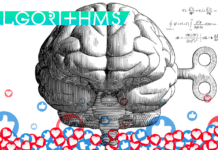 Historian Eric Hobsbawm dedicated much of his academic work to exploring the impact of the past on present-day societies. For Hobsbawm, the past was always present. Yet the function that the past plays in the present could differ greatly. During times of upheaval, the past can serve as a roadmap or template for overcoming adversity. During times of crises, the past can offer a reminder of societal resilience and thus provide hope and comfort. During times of disruption and innovation, the past plays a central role in generating a sense of nostalgia and a deeply felt yearning for the ‘good old days’.
Historian Eric Hobsbawm dedicated much of his academic work to exploring the impact of the past on present-day societies. For Hobsbawm, the past was always present. Yet the function that the past plays in the present could differ greatly. During times of upheaval, the past can serve as a roadmap or template for overcoming adversity. During times of crises, the past can offer a reminder of societal resilience and thus provide hope and comfort. During times of disruption and innovation, the past plays a central role in generating a sense of nostalgia and a deeply felt yearning for the ‘good old days’.
However, Hobsbawm also warned of the dangers of trying to relive the past. For while the past may serve as a template, it is never a cure for present-day challenges. The reason being that the past can never address the manifold of ways in which the present differs from the past. For instance, some pundits have labeled relations between the US and China as a “New Cold War”. By using this past template to characterize present day challenges, some might seek to make sense of the present competition between these two powers. Yet what soon follows is the illusion that past policies used to manage the “Cold War” might help resolve tensions between China and the US in the present. This, according to Hobsbawm is a fallacy for the state of the world, the ties between China and the US, their economic inter-dependence, and even their policy goals differ greatly from those of the US and the USSR during the 20th century.
Another fallacy that Hobsbawm alludes to is that the past often serves as “the court of appeals” for the present. That is, present days norms, values, customs and technologies are judged based on the perceived norms, values and technologies of the past. One might judge social media the way previous generations judged television concluding that social media is either a threat to the morals of young people or that social media is a new tool for mass education and mass enlightenment. Similarly, the present-day norm of self-disclosure online can be juxtaposed with the past’s emphasis on privacy and the strict separation between the professional and the personal. Yet such a judgment is inherently flawed according to Hobsbawm given that the concept of privacy is now radically different than it was in the past due to social, political and economic processes. Tech companies have pronounced the death of privacy, and they even punish privacy given that Tech companies accumulate wealth thanks to users’ personal data.
A third fallacy that Hobsbawm deals with is the innate desire to recreate the past during times of accelerated and constant innovation. As innovation creates uncertainty, there are always those who advocate a return to the past by abandoning or prohibiting innovation. Yet, as Hobsbawm writes, innovation is not some foreign body that can be excised from society. Banning social media will not undo the impact that social media has had on politics, on journalism and on the norm of privacy. Similarly, a moratorium on AI development will not stem or reverse or undo the societal impact that AI has already had on society. The dream of all powerful AIs that can do anything from write TV scripts to predict future market fluctuations has already taken hold and cannot be undone.
Notably, the development of AI and its potential application in diplomacy creates challenges that Hobsbawm warned against. For AI-based diplomacy constitutes a form of constantly using past templates to make sense of a radically different present(s). After all, AIs are all based on the past. ChatGPT uses past content, past figures and past data to answer questions about the present. Chatbots use past conversations, past questions and past interactions to better communicate with users. Even sophisticated AIs such as social media or search engine algorithms use knowledge about users’ past behavior to extrapolate future behavior.
AI thus always resides in the past and the past is never a carbon copy of the present.
In recent months, digital diplomacy scholars have examined how AI might be used by diplomats. Some, present company included, has suggested that MFAs create their own AIs that can sift through massive digital datasets. Much like ChatGPT, a State Department AI named “StateGPT” could analyze thousands of cables dealing with negotiations opposite China and identify recurring tactics used by Chinese negotiators. This insight might be used by US diplomats in future negotiations. Yet this solution traps US diplomacy in the past while ignoring the ways in which the present differs from the past.
Others have suggested that MFAs can use AIs to monitor other nations’ press releases to help predict future conflicts. An AI may find that Russian diplomats used the words “fascist”, “neo-Nazis” and “unacceptable” days before invading Georgia, Crimea and Ukraine. The same AI could then alert diplomats when Russian diplomats use these terms again in reference to another country. Such an AI would essentially serve as an early warning system, leading diplomats to scramble and try to halt another Russian invasion by warning Russia that it will soon face sanctions and isolation if it dares invade another country. Yet here again lies an expectation that the present will mimic the past. Early warning detection systems could actually trigger diplomatic actions that create or escalate crises rather than solve them.
Finally, some scholars have noted that AI may soon be used by states and individuals to create and disseminate new forms of highly believable disinfromation. Indeed, one could use ChatGPT to author false memos, diplomatic cables and phone call summaries between world leaders. Visual AI could be used to create false images of weaponized bats invading Russia or nuclear devices developed in Iran. Thus far the suggested remedies to this problem have all been rooted in the past. Many diplomats and scholars liken AI-based disinfromation to social media-based disinfromation, arguing for regulation, working alongside tech and AI companies and developing tools that label false information, such as watermarking AI generated images. Yet once again, these suggestions are all trapped in the past and assume that present-day challenges can be solved by using past templates.
There thus appears to be a basic contradiction between diplomacy, which is tasked with managing the present, and AI that operates by analyzing the past. If AI is to be used in diplomacy, then diplomats must heed the warnings, and the fallacies articulated by Hobsbawm. The past is always present, but it is never a carbon copy of the present. Past actions may not determine future actions, and past solutions or policies may fail to solve present day challenges. Using AI to simulate the future or extrapolate the future, risks making new errors and generating new crises. For diplomats and MFAs, the way to best integrate AI into diplomacy, and to contend with its potential misuse, will depend on realizing AIs existence in the past and its limited ability to predict the future. New challenges will require new ideas, new methods and new cures.








